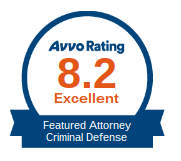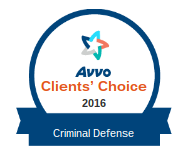There are a lot of people who find themselves suffering from alcohol and substance abuse, fortunately they are able to get support from a substance abuse disorder treatment center. However, this doesn’t stop myths from appearing in order to delay treatment or not seek help at all. Here’s a look at some of the common myths associated with alcohol and substance abuse treatment in America.
Treatment only takes 30 days
Depending on the severity of the individual’s use, the primary treatment can commonly take 60 days, 90 days, or longer, although some rehan centers opt for outpatient drug treatment. This time-frame does not include any long term continuing care recommendations that a primary treatment program would provide. Recovery from drug and alcohol abuse is an ongoing process and demands or requires lifestyle change. Continuing care helps prepare people for situations in which they have a high risk of relapse.
They don’t have the time for treatment right now, and they can’t afford to take the time off from work
When an individual is caught up in their addiction, it can be very hard to look beyond the here and now. They may worry about childcare, taking time off from work and the bills that will stack up, or what people will think about them. The truth of the matter is: this person is sick with a disease and needs treatment in order to get their life back on track.
Drug addiction is a character flaw
Above all else, alcohol or drug addiction is a brain disease. Though the actual substance an individual becomes addicted to can vary greatly, many of the effects drug use has on the brain are similar. They range from changes in the molecules and cells that make up the brain, mood changes, or changes in memory processes and motor skills, such as walking and talking. These changes make a huge impact on all aspects of the addicted person’s behavior. The drug becomes the single most powerful motivator in a drug abuser’s existence. He or she will do almost anything for the drug. This comes about because drug use has changed the individual’s brain and its functioning in critical ways.
In order for treatment to be effective, you need to want it
Alcohol or drug treatment is almost never something people want. The two main reasons people seek treatment are because they have been court ordered, or because loved ones urged them to seek treatment. Many scientific studies have shown convincingly that those who enter drug treatment programs in which they face “high pressure” to confront and attempt to surmount their addiction do comparatively better in treatment, regardless of the reason they sought treatment in the first place.
Treatment for alcohol/drug addiction should be a one-shot deal
Like many other diseases, drug addiction typically is a chronic disorder. In other words, some people can quit their drug use “cold turkey,” or they can remain sober after receiving treatment just one time at a treatment facility. This only accounts for a small percentage of people though. Most individuals who abuse drugs need longer-term treatment, and in many circumstances, repeated treatments.
We should strive to find a “cure-all” method that treats all forms of alcohol/drug addiction
The “one size fits all” treatment model for alcohol and drug treatment is just not plausible. Problems related to drug abuse differ from person to person, and range in severity. Individuals who are abusing the same drug may respond very differently to the same form of treatment. As a result, people who have alcohol or drug use disorders need an array of treatments and services tailored to address their unique needs.
People don’t need treatment. If they really want to, they can quit on their own
Though a person may voluntarily use alcohol or a substance in the beginning, over time, the individual’s brain changes and they are no longer able to be occasional alcohol/drug users. Their use becomes compulsive and uncontrollable. It is extremely difficult for people addicted to alcohol and/or drugs to achieve and maintain long-term sobriety. Research has shown that long-term drug use actually changes the way a person’s brain functions. These changes result in them craving the drug even more, and makes it much more difficult for the person to quit. Intervening and stopping substance abuse early is especially important when it comes to adolescents. Children become addicted to drugs much faster than adults, and there is a greater risk for the development of physical, mental and psychological harm from the use of illicit drugs. Quitting alone can seem like a mammoth-sized task.
Treatment doesn’t really work
This is simply false, for treatment does help people. Studies show that treatment reduces drug use by 40 to 60%, and can significantly decrease criminal activity during and after treatment. There is also evidence that drug addiction treatment reduces the risk of HIV infection (intravenous-drug users who enter and stay in treatment are up to 6 times less likely to become infected with HIV than other users), and improves the prospects for employment, with gains of up to 40% after treatment.
Unless someone hits “rock-bottom,” they will not voluntarily seek treatment
There are many things that can motivate a person to enter and complete substance abuse treatment before they hit “rock bottom.” Whether its pressure from family members and employers, or admitting to themselves that they have a problem, there are many powerful motivating factors for individuals to seek treatment. For teens, parents and school administrators are often driving forces in getting them into treatment. This often occurs once problems at home or in school develop, yet before the issues become dire.
A person can’t be forced into treatment
On the contrary, treatment does not have to be voluntary. People coerced into treatment by the legal system can be just as successful as those who enter treatment voluntarily. Sometimes the individuals who are forced into treatment actually do better than those who go voluntarily, as they are more likely to remain in treatment longer and complete the program.
There should be a treatment program that works for everyone
One treatment method is not necessarily appropriate for everyone. The best programs develop an individual treatment plan based on a thorough assessment of the individual’s problems. These plans may combine a variety of methods tailored to address each person’s specific needs and may include behavioral therapy (such as counseling, cognitive therapy or psychotherapy), medications, or a combination. Referrals to other medical, psychological and social services may also be crucial components of treatment for many people. Furthermore, treatment for teens varies depending on the child’s age, maturity and family/peer environment, and relies more heavily than adult treatment on family involvement during the recovery process.
If you have participated in one treatment program, you’ve tried them all
Not every program may be the right fit for someone seeking treatment. For many, finding an approach that is personally effective for treating their addiction can mean trying out several treatment centers before a perfect ‘match’ is found between the patient and a program. There are a plethora of different treatment options available today. Some are very similar, and some differ greatly in the treatment methods they implement into their programs. Just because someone didn’t find a particular treatment program to be helpful, does not mean they should assume all treatment programs follow the same guidelines.
If an individual truly wants to recover, that person can successfully finish a treatment program in a couple of weeks
Research indicates a minimum of 90 days of treatment for residential and outpatient drug-free programs, and 21 days for short-term inpatient programs to have an effect. To maintain the treatment effect, follow up supervision and support are essential. In all recovery programs the best predictor of success is the length of treatment. Patients who remain at least a year are more than twice as likely to remain drug free, and a recent study showed adolescents who met or exceeded the minimum treatment time were over one and a half times more likely to abstain from drug and alcohol use. However, completing a treatment program is merely the first step in the struggle for recovery that can extend throughout a person’s entire lifetime.
If people continue to use drugs after successfully completing treatment, they are hopeless
Drug addiction is a chronic disorder, and relapse does not equal failure. Psychological stress from work or family problems, social cues (i.e. meeting individuals from one’s drug-using past), or their environment (i.e. encountering streets, objects, or even smells associated with drug use) may trigger a relapse. Individuals who successfully complete a treatment program are most vulnerable to drug use during the few months immediately following their release from treatment. Adolescents are especially at risk for relapse when they are forced to return to family and environmental situations that initially led them to abuse substances. Recovery is a long process and frequently requires multiple treatment attempts before complete and consistent sobriety can be achieved.
There are so many myths out there about alcohol and substance abuse treatment, but unless you’ve been through the program, you won’t know which advice is best. Thankfully, the attorneys at Appelman Law Firm have helped hundreds of people battling addictive tendencies get the help they need and provide them with sound, practical advice. If you’re looking for somewhere to turn before or after a substance-related arrest, contact Appelman Law Firm today. We’ve guided many people down the path of recovery, and we can do it again for you.





